Silver-studded Blue - Plebejus argus
Phylum: Arthropoda - Class: Insecta - Order: Lepidoptera - Family: Lycaenidae
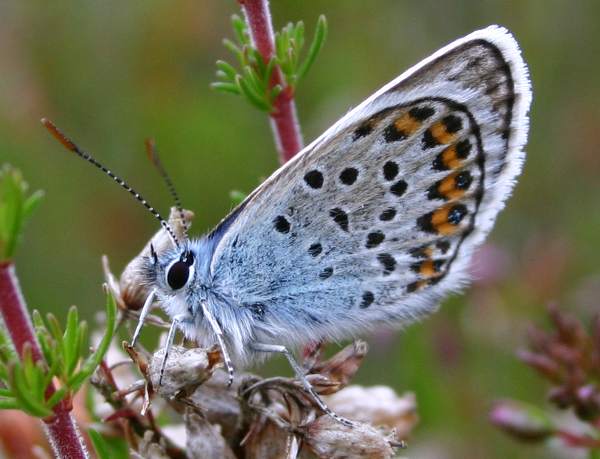
This heathland butterfly is in decline because of loss of suitable habitat. Fortunately, however, here are still many good coastal and chalk downland heathy sites where the Silver-studded Blue can be seen in good numbers. They are communal and tend to stay fairly close together in colonies of a few hundred or exceptionally several thousand individuals.
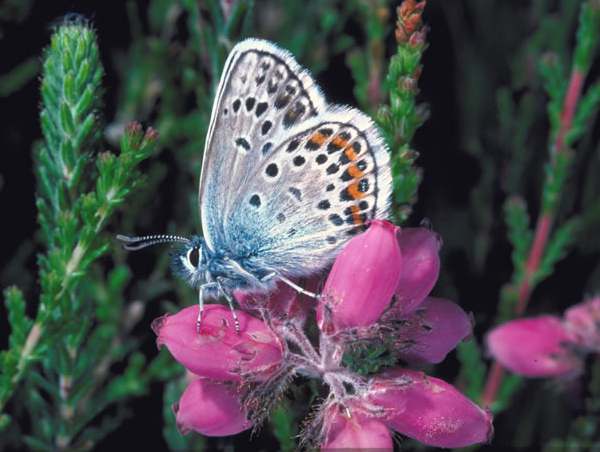
The male, pictured below, is particularly splendid with blue upperwings.
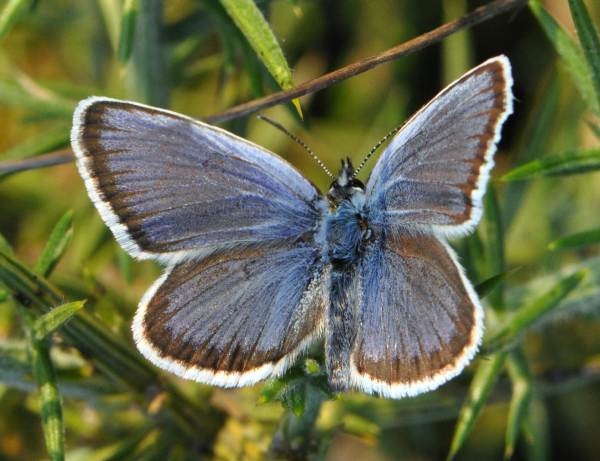
The females - an example is shown below - are much browner and less conspicuous.
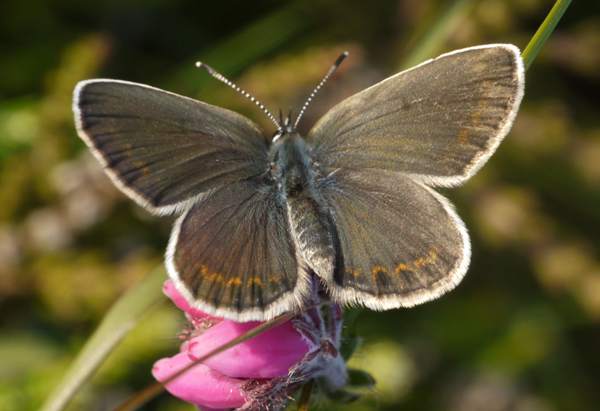
The common name of the Silver-studded Blue butterfly is a reference to pale blue reflective scales on the underside of the hindwings; these scales can glint spectacularly when you see this lovely butterfly in bright sunlight.
Distribution
In Britain scattered colonies of Silver-studded Blue butterflies can be found in central and southern England and in many parts of Wales; the main concentrations and largest colonies are in heathland and in the chalk downland areas of southern England.
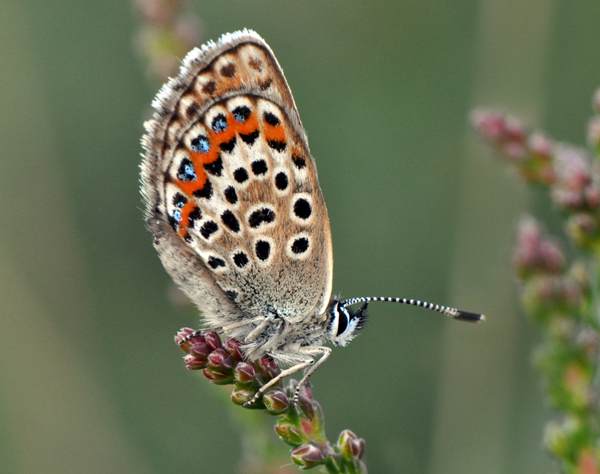
Elsewhere this butterfly is fairly common in many countries of central mainland Europe; its range extends into Asia, including Japan.
Lifecycle
The Silver-studded Blue produces a single brood, which can be seen in flight during July and the first half of August. This one of the butterflies that has a symbiotic relationship with ants.
Eggs are laid either on the ground or very low down in vegetation, and in this form the insects overwinter to hatch as caterpillars in late March or early April. The larval foodplants are very varied. In heathland the caterpillars feed on the various gorses as well as Heather or Ling (Calluna vulgaris), Bell Heather (Erica cinerea) and Cross-leaved Heath (Erica tetralix). On chalk downland the larvae feed on plants typical of such habitats, which include Wild Thyme (Thymus spp), Bird's-foot Trefoil (Lotus corniculatus) and Common Rock-rose (Helianthemum nummularium).
The caterpillars produce a honeydew-like liquid which ants feed upon, and to protect their food suppliers the ants in turn ward off predators that might otherwise consume the caterpillars.
Even the pupae are capable of producing honey-dew food, and so the ants continue protecting the chrysalises until the adult butterfly emerges.
Etymological note: the generic name is variously spelt Plebeius and Plebejus.
Acknowledgements
This page includes pictures kindly contributed by Betty and Tony Rackham and by the Countryside Council for Wales.
Studying butterflies and moths...
Excited at the prospect of flyfishing? So are we, and we're pretty sure you would find the Winding River Mystery trilogy of action-packed thrillers gripping reading too. Dead Drift, Dead Cert, and Dead End are Pat O'Reilly's latest river-and-flyfishing based novels, and now they are available in ebook format. Full details on our website here...
Buy each book for just £4.96 on Amazon...
Please Help Us: If you have found this information interesting and useful, please consider helping to keep First Nature online by making a small donation towards the web hosting and internet costs.
Any donations over and above the essential running costs will help support the conservation work of Plantlife, the Rivers Trust and charitable botanic gardens - as do author royalties and publisher proceeds from books by Pat and Sue.
